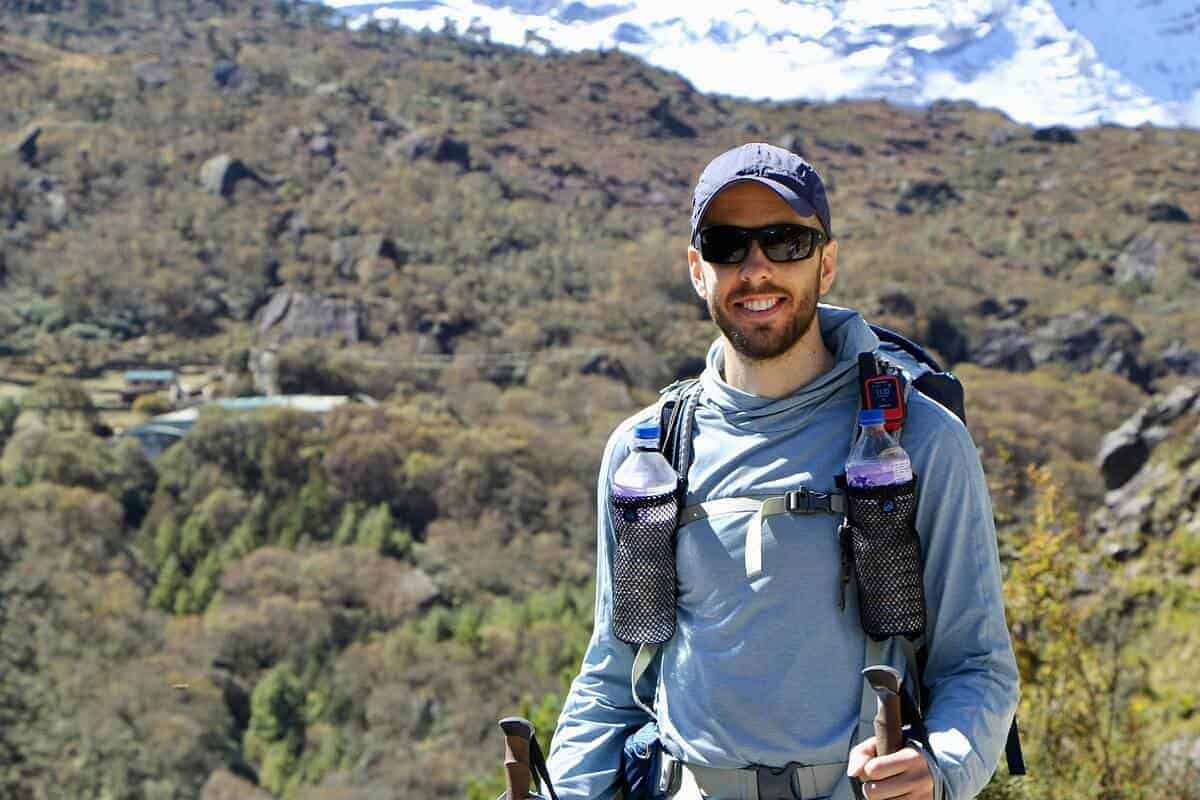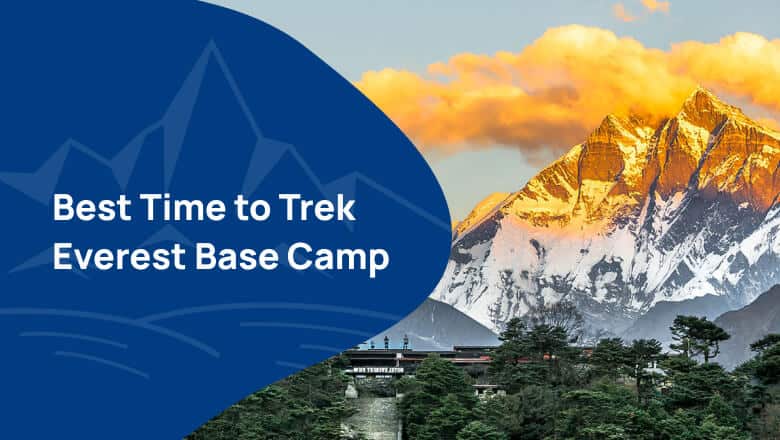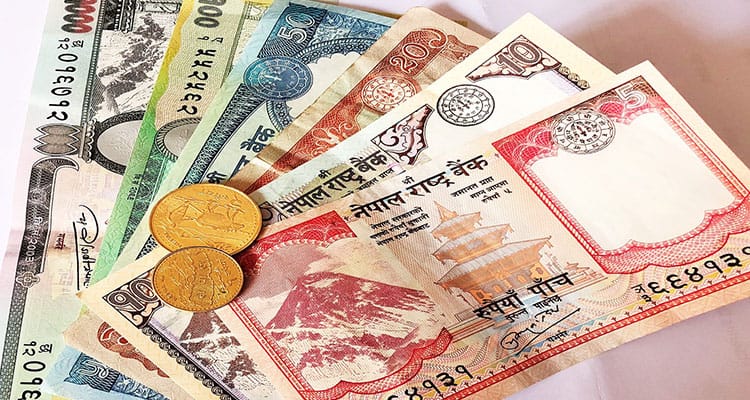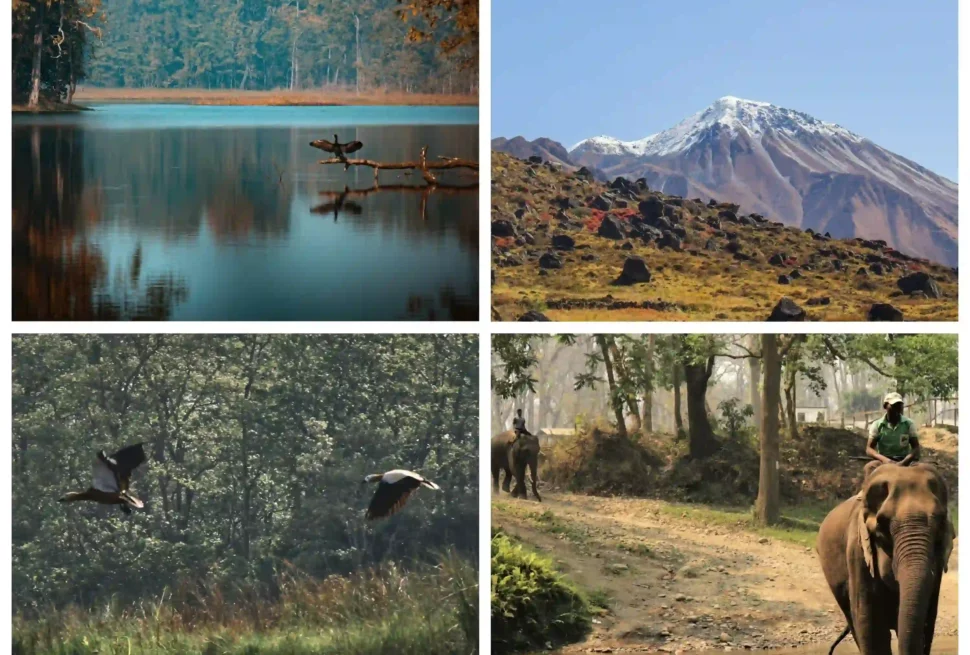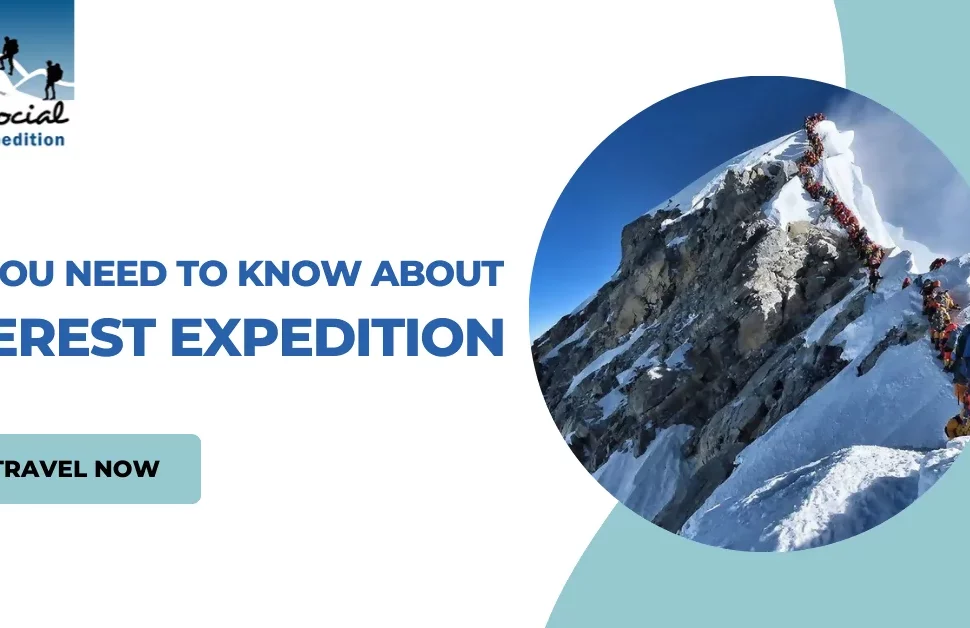Contents
Introduction
As you must have arrived here after hearing about trekking the great Himalayas of Nepal, we wholeheartedly welcome you. Since you don’t have much idea about trekking, it is obvious that you have also come here for valuable information about trekking in Nepal as a beginner. We want to say to you that, you have come exactly to the right place. Here, we have prepared the ultimate guide to trekking in Nepal for beginners where as a beginner you can get all of the essential information related to trekking in Nepal.
As we have mentioned earlier, Nepal is the home to the great Himalayas. If you choose to walk through the rugged paths of the mountains, you have to go through extreme terrains and situations. Knowing the presence of such extreme terrains in the country, it is obvious that trekking in Nepal for beginners is hard. But don’t worry, within such hard treks, there are plenty of treks in Nepal that are suitable for beginners.
Nepal hosts different levels of trekking adventures for all kinds of trekkers. It welcomes trekkers from all parts of the world with its majestic mountains, unique culture, and friendly hospitality. Hence, right now all we want to say is that trekking in the Himalayas can be the perfect choice for you as a beginner. You won’t have any kind of regret until and unless you choose to do the hard trek as a beginner. Therefore, to get more details we are going to deep dive into specifics that you need to keep in mind while trekking in Nepal. So without wasting any time, let’s get started-
Why Trekking in Nepal?
Before trekking to this country, it will be important for you to know why you are trekking this country and what you will get after trekking into this country. So for that reason, we will talk briefly about this topic first. Trekking in Nepal as a beginner is an ideal introduction to the world of adventure travel, offering accessible natural routes, with amazing hospitality and unspoiled natural beauty. Trekking routes that are well-established and offer both spectacular scenery and doable challenges, like the Everest Panorama View Trek and the Annapurna Panorama Trek, are ideal for beginner trekkers.
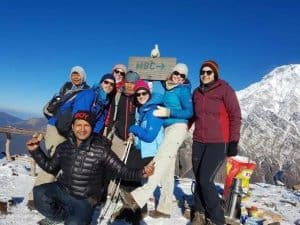
Furthermore, beginners follow the routes with confidence with the help of knowledgeable local porters and guides, who will also share important knowledge about cultural customs and mountain safety. Therefore, to ensure that beginners can concentrate on enjoying the adventure and creating lifelong memories amid the breathtaking Himalayan vistas, Nepal has developed a trekking infrastructure that includes cozy lodgings and wholesome food.
How to prepare for the trek in Nepal as a beginner?
Heading on a trekking adventure in Nepal as a beginner is an exciting and rewarding experience, but proper preparation is essential to ensure a safe and enjoyable journey. Here’s a detailed guide on how to prepare for trekking in Nepal as a beginner:
Research and Choose the Right Trek
Choose a trekking route in Nepal according to your interests, fitness level, and time limits after doing a bit of study on them. Select popular choices that provide amazing views and doable difficulty. You can read more about the beginner-friendly treks in the next section of this blog.
Physical Fitness and Training:
Trekking in Nepal requires trekking at high altitudes for several hours each day, thus physical preparation is essential. To increase endurance, strength, and stamina, begin a fitness program that includes strength training, cardiovascular exercise, and hiking. In the months before your trek, try to progressively increase the length and intensity of your training.
Acclimatization and Altitude Sickness Prevention:
Acclimatization is crucial for your safety and well-being when trekking at high elevations because altitude sickness might affect trekkers there. To give your body time to acclimate to the altitude, incorporate rest days and gentle ascent patterns into your trekking itinerary. Avoid alcohol and caffeine, drink plenty of water, and pay attention to your body’s warning signals for altitude sickness, which include headaches, nausea, and exhaustion.
Gear and Equipment:
To guarantee your comfort and safety on the trail, invest in top-notch trekking gear and supplies. Strong hiking boots, water-resistant clothes, trekking poles, a first-aid kit, and sunscreen are the best necessities. If you don’t have what you need, consider buying or renting it in Pokhara or Kathmandu.
Permits and Regulations:
Make sure you have the required permissions and follow local laws before starting your trek. The two popular permits needed for trekking in Nepal are the Sagarmatha National Park Permit (for Everest region treks) and the Annapurna Conservation Area Permit (ACAP) for the Annapurna region. These permits can be acquired in Kathmandu or Pokhara from authorized agencies.
Hiring a Guide or Porter:
While it is possible to trek alone, many beginners choose to hire a local porter or guide for convenience and increased safety. Expert guides help with directions, offer interesting perspectives on the local way of life, and guarantee a stress-free and pleasurable trek. Whereas, employing a porter will help you move lighter and spend more time taking in the experience and the surroundings.
Accommodation and Food:
In Nepal, there are many different places to stay along well-traveled trekking routes, from teahouses to guesthouses and lodges. Because these places provide hot showers, food, and accommodation, even beginner trekkers can enjoy trekking without bringing along camping gear. So, get ready to enjoy some authentic Nepali food, such as momos (dumplings), thukpa (noodle soup), and dal bhat (rice and lentils), which will power your trekking adventures.
Cultural Immersion:
The chance to experience the native way of life and culture is one of the best things about trekking in Nepal. To get to know Nepal’s diverse cultural legacy, spend time engaging with the people there, visiting monasteries and temples, and taking part in cultural events.
Environmental Conservation:
It is essential that we as responsible trekkers reduce our environmental footprint and safeguard Nepal’s untouched natural splendor for the future. Don’t forget to pack up your waste, use trails that are marked, save water, show consideration for wildlife and local customs, and follow the Leave No Trace philosophy. You can be well-prepared to go on an amazing and fulfilling journey in the Himalayas as a beginner after you follow these comprehensive steps. If you put enough thought into your planning and preparation, there is no doubt that you’ll be rewarded with jaw-dropping views, first-hand cultural immersion, and life-changing experiences in this beautiful country.
Best Trek in Nepal for beginners
Now as we have told you how to prepare yourself for trekking in Nepal as a beginner, we want to tell you the best treks in Nepal for beginners. Check out these treks so that you can consider these treks for your upcoming adventure in Nepal.
Ghorepani Poon Hill Trek
- Duration: 4-5 days
- Difficulty: Easy
- Highlights: Stunning sunrise views of the Annapurna and Dhaulagiri mountain ranges, rhododendron forests, and friendly Gurung villages.
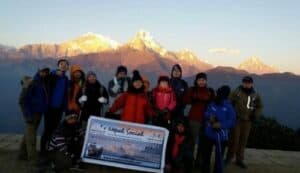
Beginners love the Ghorepani Poon Hill Trek because of its decent distance and moderate degree of difficulty. This journey, which takes four to five days, gives stunning sunrise views of the Dhaulagiri and Anna
Langtang Valley Trek
- Duration: 7-10 days
- Difficulty: Easy to Moderate
- Highlights: Scenic Langtang Valley, diverse flora and fauna, views of Langtang Lirung and other Himalayan peaks.
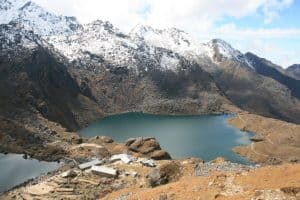
Langtang Valley Trek offers a perfect mixture of natural beauty and cultural experiences. It is also an ideal choice for beginners seeking a slightly longer trek. Lasting 7 to 10 days, this journey introduces trekkers to the picturesque Langtang Valley, which is known for its amazing landscapes of mountains. With its relatively gentle terrain, the trek is very suitable for beginner trekkers.
Everest Panorama View Trek
- Duration: 5-7 days
- Difficulty: Easy
- Highlights: Close-up views of Mount Everest, Sherpa culture, and Tengboche Monastery.

Everest Panorama View Trek is perfect for beginners who dream of glimpsing the world’s highest peak without committing to a strenuous journey. Lasting 5 to 7 days, this trek offers close-up views of Mount Everest and other iconic Himalayan peaks. The trail wanders through charming Sherpa villages, offering chances to fully experience the hospitality and culture of the Sherpas.
Annapurna Panorama Trek
- Duration: 6-8 days
- Difficulty: Easy to Moderate
- Highlights: Spectacular views of Annapurna and Machhapuchhre, traditional Gurung villages, and natural hot springs.
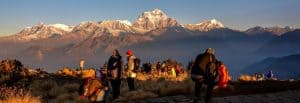
For those who are new to trekking and want to experience both natural beauty and cultural interactions, the Annapurna Panorama Trek is a fascinating adventure across the Annapurna region. This 6- to 8-day trek provides breathtaking views of the Annapurna and Machhapuchhre peaks.
Helambu Trek
- Duration: 5-7 days
- Difficulty: Easy
- Highlights: Scenic Helambu region, Sherpa and Tamang villages, Buddhist monasteries.
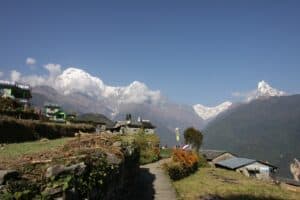
Helambu Trek is a great option for novices since it provides a peaceful escape into the beautiful scenery of the Helambu region. This five to seven-day journey offers trekkers an opportunity to witness the stunning Sherpa and Tamang communities tucked away among beautiful hills. Hence, Helambu Trek offers remarkable views of the Himalayan landscape but is also accessible to beginner trekkers due to its moderate altitude and relatively simple terrain.
When to go trekking in Nepal as a beginner?
Many adventurers have the desire to trek in Nepal, and for beginners, timing is everything when starting a journey to ensure a safe and enjoyable experience. Trekking seasons vary in Nepal due to its diverse landscapes and weather, each offering pros and cons. Here is a thorough information on when a beginner should go trekking in Nepal:
Spring Season (March to May):
- Weather: Because of the beautiful skies and moderate temperatures, spring is one of the greatest seasons for trekking in Nepal. The rhododendrons are flowering and the weather is gradually warming, bringing brilliant colors to the surroundings.
- Trekking Conditions: Because most trails are firm and dry, trekking is more comfortable for beginners in this season. The beautiful Himalayan peaks are wonderfully visible thanks to the clear weather.
- Popular Treks: Ghorepani Poon Hill, Langtang Valley, and Everest View Trek are popular choices during the spring season.
Autumn Season (September to November):
- Weather: In Nepal, autumn is regarded as the best trekking season. Trekking is highly recommended due to the consistent weather, characterized by bright skies and pleasant temperatures.
- Trekking Conditions: For beginner trekkers, the well-marked trails offer ideal walking conditions with minimal rain. The mountains are stunningly visible in the fresh air.
- Popular Treks: Annapurna Base Camp, Dhampus Village Trek, and Langtang Valley Trek attract numerous trekkers during the autumn season.
Monsoon Season (June to August):
- Weather: The monsoon brings heavy rainfall to Nepal, making trekking challenging for beginners in many regions. The trails can be muddy, and frequent rainfall may affect visibility.
- Trekking Conditions: Trekking during the monsoon season is not recommended for beginners due to the slippery trails, leeches, and risk of landslides. However, some rain-shadow areas like Upper Mustang and Dolpo remain relatively dry and can be suitable for trekking.
- Alternative Activities: Instead of trekking, beginners can explore cultural heritage sites in Kathmandu and Pokhara or engage in activities like white-water rafting.
Winter Season (December to February):
- Weather: In higher altitudes, winter brings chilly temperatures and occasional snowfall. Lower altitude areas, however, enjoy bright days and clear skies.
- Trekking Conditions: Wintertime offers the possibility of trekking in lower altitude areas such as Ghorepani Poon Hill and Helambu. In certain places, trails could be ice, so use caution.
- Alternative Activities: Beginners can explore short treks in lower altitude regions, visit wildlife reserves, or participate in cultural tours.
In conclusion, a variety of factors, including the weather, trekking conditions, and individual tastes, influence the ideal time of year for beginners to go trekking in Nepal. The best seasons for beginners are spring and fall when the weather is moderate and the sky is clear. Therefore, regardless of the season, trekking in Nepal can be an exciting trip with careful planning and proper preparation.
How to stay healthy and safe during the trek as a beginner?
Nepal is particularly safe when you view in the way of security concerns. But healthwise you must pay attention to certain things. As you are trekking for the first time in this country, being safe and healthy is a top concern. So here are some of the important things to consider while you trek in Nepal.
- Contacts: Have a contact list of people to call in case of emergency at all times. This list should include your trekking company, the nearest hospital, and your embassy or consulate in Nepal.
- First Aid Kit: Additionally, owning a first aid pack is essential. Supplies such as bandages, antiseptic, painkillers, and other personal medications you might need should be packed.
- Respect Local Customs: In the Himalayan region, Buddhism and Hinduism are prominent religions. So while visiting temples, monasteries, or religious sites, dress modestly and act respectfully.
- Water Purification: Although bottled water is widely accessible, it will be essential for you to have a water filtration system. It can be either water purification pills or a portable filter.
- Communicate Clearly: Make sure you and your trekking partners can communicate well. Eventually, if you don’t feel well or have any worries, let them know.
What to bring while trekking in Nepal for Beginners?
Here’s a list of essential items to pack for your trek:
- Backpack: Having a dependable, comfortable backpack that fits well and evenly distributes weight is very essential while doing the trek in Nepal as a beginner.
- Trekking Boots: Invest in solid, comfortable, and waterproof trekking shoes.
- Clothing: Wear layers to adapt to changing temperatures. Include moisture-draining base layers, insulating mid-layers, and waterproof upper layers.
- Toiletries: Bring basic supplies like toilet paper, soap, and a towel.
- Trekking Poles: In particular, when going downward, these provide support and stability.
- Snacks: To keep yourself energized when trekking, pack items that are small, such as energy bars and nuts.
- Cash: Since ATMs are very few in isolated areas, you should bring enough cash to cover any additional expenses.
Conclusion
In conclusion, trekking in Nepal as a beginner is an amazing chance to be involved in life-changing adventures, immerse in rich cultural history, and see some of the most stunning landscapes on earth. With the right preparation, gear, and mindset, you can make your dream of trekking in Nepal a reality and create memories that will last a lifetime. So, what are you waiting for? Start planning your trekking adventure in Nepal today!

